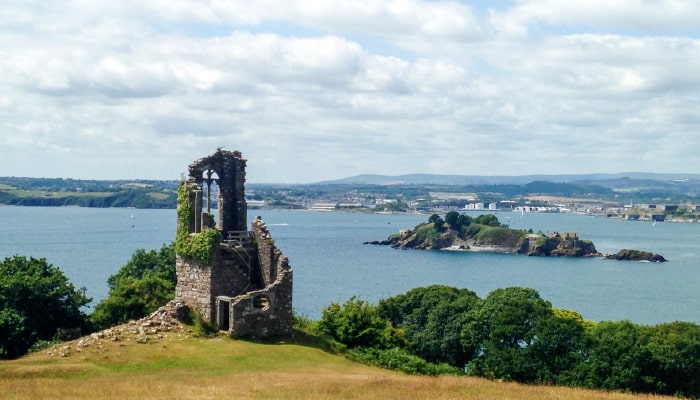Quaint, charming and oh so traditional, the United Kingdom’s Kingsand and Cawsand are the stuff that dreams are made of.
Mainly untouched by modern advancements, the eye-catching seaside villages in southeast Cornwall are as highly regarded today for their historic character as they are for their natural beauty. Off-the-beaten path yet popular with tourists and adventurers, the pair of picturesque places—which boast dramatic cliffs, densely wooded hillscapes and tranquil beaches—are an approximate five-hour drive from London.
Visually stunning, the Rame peninsula-based destinations need no more than the light and the landscape to capture the attention of travelers, though there is certainly much more to their story. Packed with history, and with much of the architecture in place to prove it, the tiny villages were once home to a thriving fishing industry and plenty of smuggling schemers.
Today the hotspots are now home to a tightknit artist and artisan community, as well as the expected ancillary inns, pubs, cafes, shops and galleries. And though the smugglers’ tunnels have long been sealed up, it’s still possible to hike, camp, fish, boat and dive into the clear waters of Cawsand Bay, which is tucked between the English Channel and the Celtic Sea.

Twinned with Porspoder in France and oft referred to as “the Forgotten Corner,” the historical fishing villages are frequently honored with England’s versions of “Best Kept Village” and “Area of Outstanding Natural Beauty” awards. Adding to the charm here are narrow and windy streets, where automobiles are prohibited. But getting around is easy, and there’s quite a lot to explore in town and around.
Merely walking through the tiny villages (Cawsand is essentially a few homes, an inn and a very good artisanal bakery café, while the bigger Kingsand is host to a couple dozen places to eat, drink, lodge and shop) is enough for some, as the whitewashed and pastel hued cottages that line the streets are postcard pretty and more than enough to hold one’s attention. But there are also the beaches—The Cleave, a mix of sand and shingle, or “pebble” as we’d say here in the States; pebbly Girt Beach; sandy Cawsand Beach and several other points of interest.
The best-known landmark in the area is the seafront Clocktower in Kingsand, erected to commemorate the coronation of King George V in 1910 and nearly destroyed by floods in 2014. Now rehabbed and used as a community hall, the handsome stone building is protected by a reinforced seawall and houses a cross-stitch tapestry keepsake of the two villages, made by the residents to commemorate the Golden Jubilee of Queen Elizabeth II in 2002.

Another significant draw to the area is the Coastal Path, which runs along the edge of the sea, past Penlee Point and ending at Rame Head. A fairly rugged trek by foot, the final destinations here, high atop a hill are the remains of a 14th century monk’s chapel and glorious views of Whitsand Bay.
History is evident all around. Close by is Mount Edgcumbe, a 16th century Tudor estate built in the mid 1500s and overlooking Plymouth Sound and the River Tamar. Other nearby historic country estates are Country Park and Anthony House, which we didn’t get the chance to visit but look quite nice.
And for those who aren’t necessarily into nature and architectural-type meandering, there’s also the nearby historic Plymouth Barbican area. It’s a quick ferry ride away and home to the National Marine aquarium and plenty of shops and restaurants. Can’t wait to head back and explore even more!








